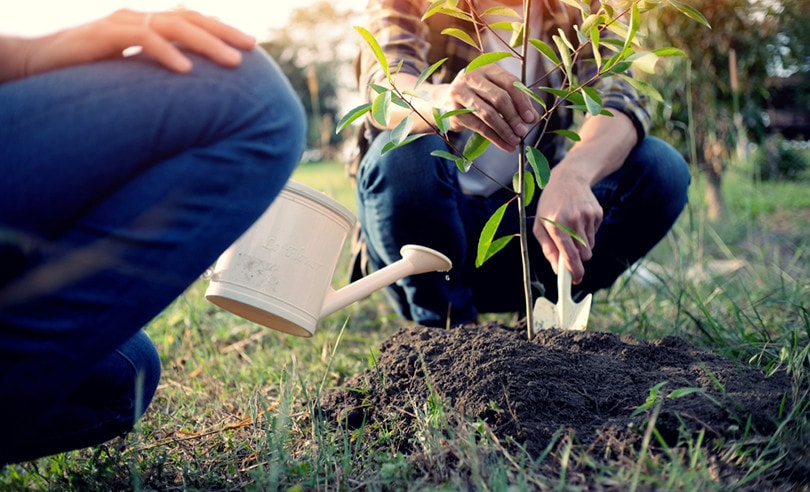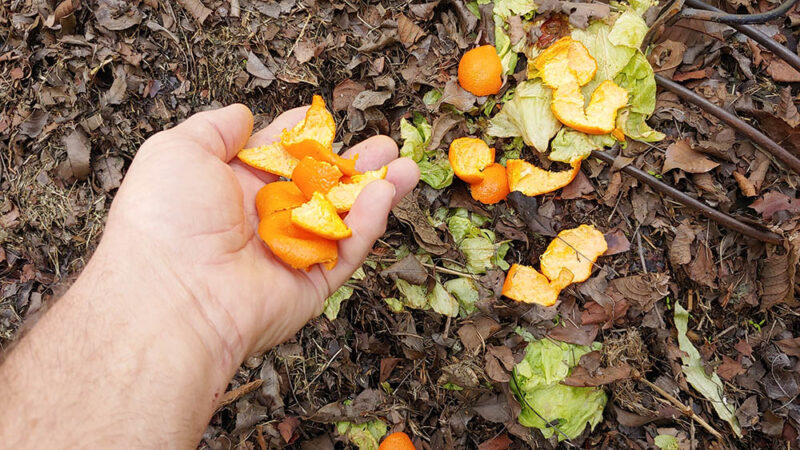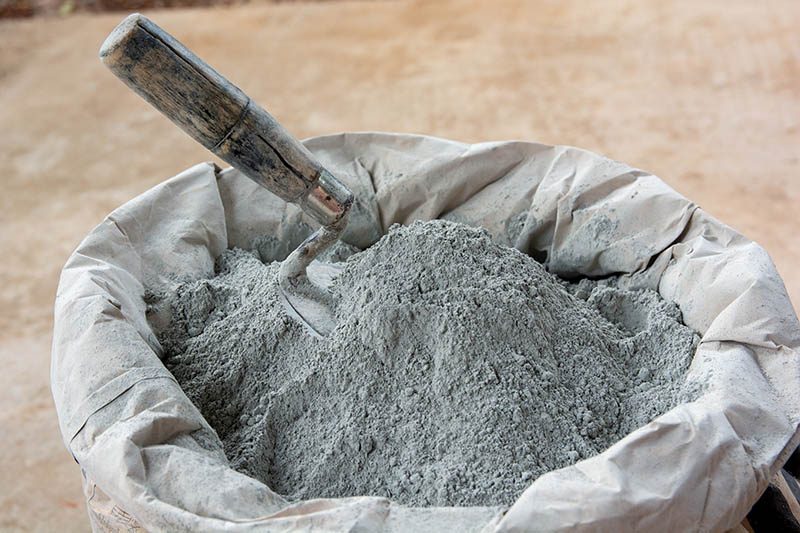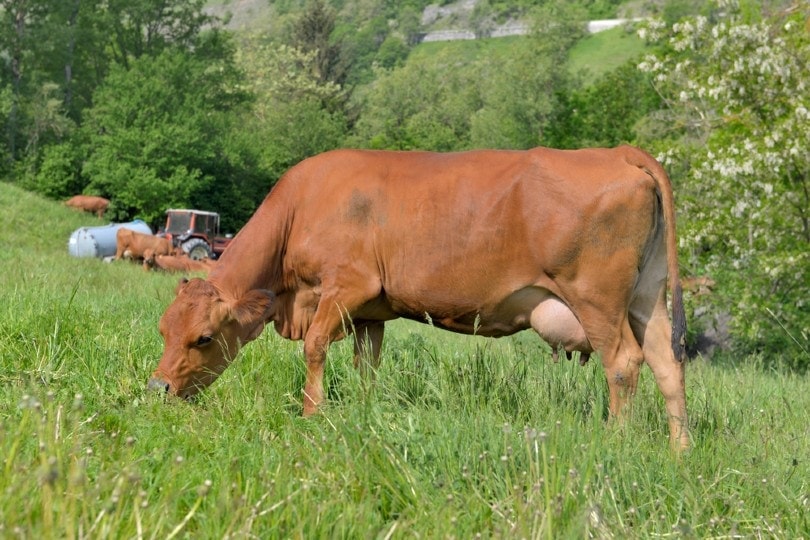How to Capture CO2 at Home – 7 Homemade Carbon Capture Techniques
-

- Last updated:

The certainty of climate change is upon us. While some people hope that if they don’t pay it any attention, it will magically go away, others are taking responsibility and are committed to making changes, big or small, in their daily lives to make a difference. One area where we can make changes on a small scale is to focus on reducing our greenhouse gas emissions by changing certain aspects of our lives and lifestyles.
The average monthly level of CO2 in the Earth’s atmosphere reached 421 parts per million in May 2022, and carbon dioxide makes up 80% of all greenhouse gasses. Carbon can be captured from the atmosphere and stored in various life forms, including trees, vegetation, soils, and aquatic ecosystems. Homeowners can also make responsible decisions at home to capture and store carbon to contribute to the fight against global warming.
The 7 Homemade Carbon Capture Techniques
1. Plant Trees

We have all learned from a young age how beneficial trees are and their essential role in the environment. As trees grow, they absorb atmospheric carbon and store it in the organic matter of their trunk, branches, and leaves. They also help to capture carbon below ground by increasing the amount of organic carbon. While they assist in capturing carbon from the atmosphere, the carbon will be released back into the atmosphere when they die and decompose.
However, many trees have a long lifespan, and planting trees can serve as a long-term solution for carbon capture and storage. The average hardwood tree is estimated to absorb approximately 48 pounds of CO2 per year for a lifetime value of roughly one ton of CO2.
Planting trees in your yard can also attract beneficial insects and animals, grow fruit for you to enjoy, control erosion, and provide shade which can reduce your home’s energy needs if you plant them strategically.
How to Plant
Naturally, it would be best if you chose trees suited to your climate and location. The technique by which a tree is planted can really make the difference between a tree that only survives through a few seasons and a tree that will live long enough to capture enough carbon.
Some plants and trees thrive only in certain climates, so it’s critical to research which ones would work best where you live. While improper soil pH levels can be corrected with fertilizers and other soil additions, it is vital to test your soil’s pH before planting. Furthermore, you should ensure that your new tree does not have to compete with other plants and trees nearby for sun exposure and nutrients. Staking is also important to assist with strong winds until the roots are established enough to stabilize the tree.
2. Add Plants to Your Home
Having plants inside your home will not only add aesthetic value, but they help reduce your carbon footprint. It may seem insignificant, but every little bit counts. CO2 levels in your home’s air will vary greatly depending on where you live, how many people are in a room, whether or not you open the windows, and other factors.
The prayer plant, a member of the Calathea family, is the most effective plant for absorbing CO2 and reducing your carbon footprint.
3. Compost Your Organic Waste

Instead of throwing all your organic waste away, add it to your compost bin, and if you don’t already have a compost heap, you can easily build or purchase one. Composting these wastes will not only reduce methane emissions from landfills but will also improve the soil in the garden and aid in carbon storage.
4. Build with Wood
One major benefit that is frequently overlooked is that using wood products in our homes delays the release of carbon that occurs when wood products decompose. Wood products made from mature hardwood trees can easily last another 250 years.
If you are building a new structure on your property or renovating, using salvaged or reclaimed wood relieves pressure on living forests and can potentially extend the carbon storage properties of forest trees that were cut down hundreds of years ago.
5. Use Low Carbon Cement

The cement industry is a significant source of greenhouse gas emissions and is also the most commonly used material on the planet. During the curing process, low-carbon cement naturally reacts with carbon dioxide in the surrounding air. It can permanently trap and capture carbon within the concrete mixture as it hardens. Low-carbon cement can play a small but effective role in capturing carbon if you are building or renovating.
6. Use Olivine Roofing
We can trap carbon in our roofs by using the mineral Olivine. Olivine is a green mineral that is hugely abundant in the Earth’s mantle. When exposed to CO2 in the air, it quickly erodes, soaking up the carbon and transforming the mixture into silicon dioxide and magnesite.
Derbigum, an Olivine roof manufacturer, has developed a system that binds with CO2 when the roof is hit with rain. A roof constructed with Olivine can hold up to 1.25 times its weight in CO2 over approximately 30 years, and when it’s done, you can easily roll out a new roof and begin the process again.
7. Eat Pasture Raised Meat

Choosing your source of meat is important when trying to curb your carbon footprint. The operations involving animals and livestock being raised for meat production pollute the environment and contribute significantly to climate change. Furthermore, deforestation is one of the terrible results of making room for raising livestock and cattle for meat and dairy.
Natural grasslands also cover a big portion of the land’s surface, and instead of using the land for crops, regenerative grazing can store large amounts of carbon in the soil. If you enjoy eating meat, consider supporting companies that offer certified grass-fed and regenerative grazing options.
Conclusion
If everyone played a small part in capturing and storing carbon, it would have a more significant effect than we realize. These small changes may seem insignificant, but it all adds up, and it all starts with making more conscious choices. If you are building or renovating, consider your materials and methods, be mindful about where you source your meat, and most importantly, get as many trees into the ground as you can possibly fit and nurture them to live long, healthy, carbon-storing lives.
- https://www.buildwithrise.com/stories/what-you-can-do-to-capture-carbon
- https://www.youngshomecomfort.com/blog/household-co2-what-causes-high-carbon-dioxide-levels/
- https://www.smithsonianmag.com/science-nature/five-ways-you-can-store-excess-carbon-your-home-literally-180958187/
- https://en.wikipedia.org/wiki/Carbon_dioxide_in_Earth%27s_atmosphere
- https://www.epa.gov/ghgemissions/overview-greenhouse-gases
- https://www.co2meter.com/blogs/news/could-global-co2-levels-be-reduced-by-planting-trees
Featured Image Credit: marcinjozwiak, Pixabay
Contents


